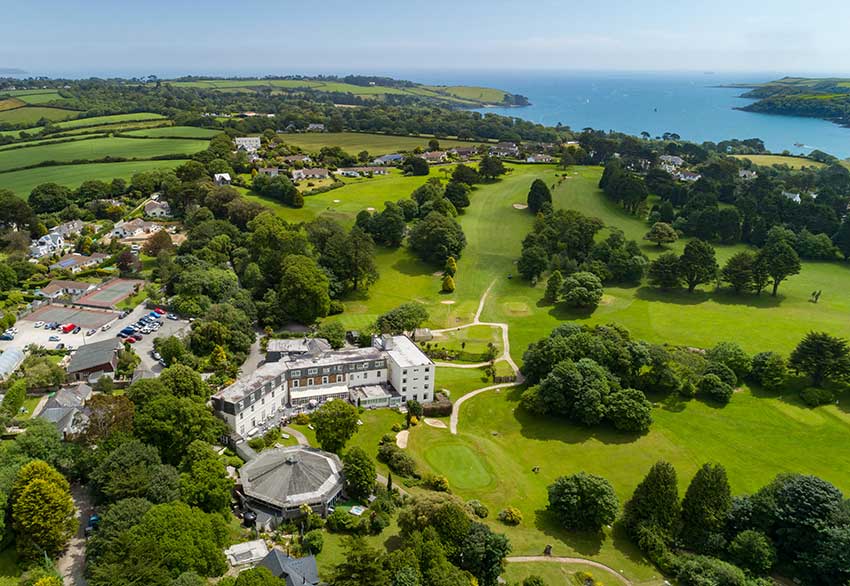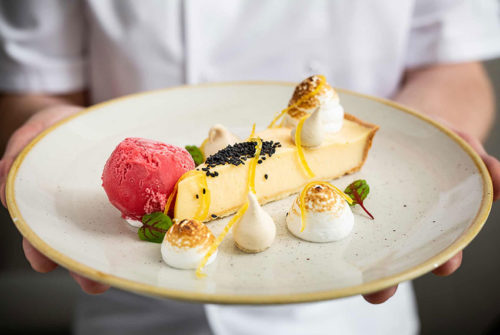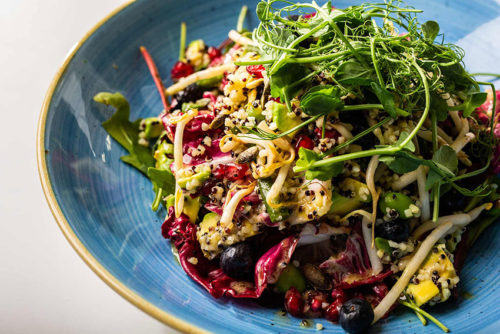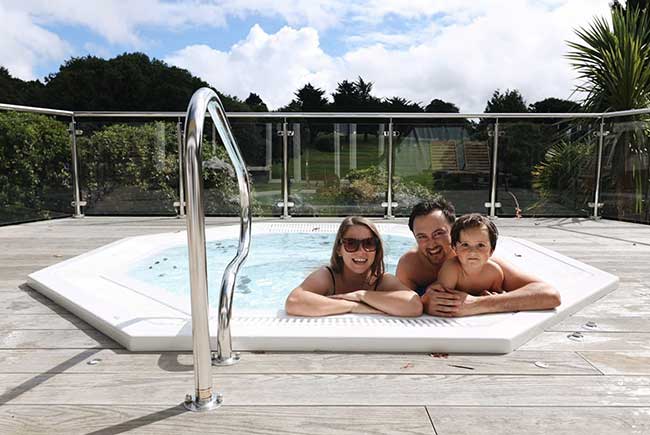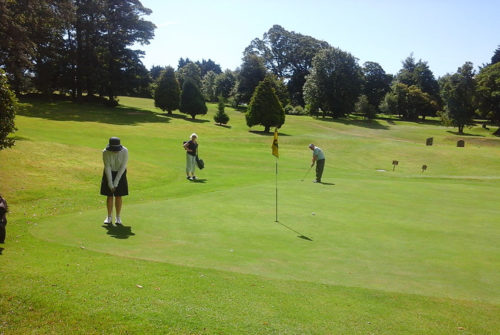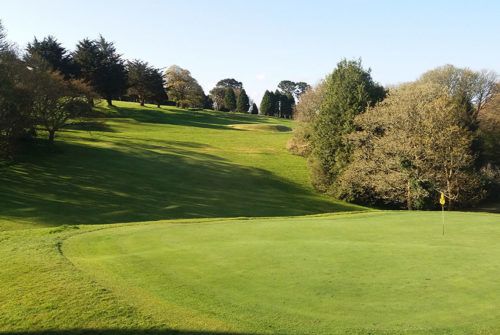News from Budock Vean
The Pender Family of Budock Vean – PART 4
William married his first wife Anna Jane Penrose, the daughter of a Falmouth bookseller, in 1856 but sadly their marriage was not to be a happy one. They had four children but each died before reaching their second birthday. Their fifth child, Catherine Maria born in 1864 lived but then Anna Jane herself passed away in 1866 aged just 28 years.
After these tragic losses it seems that William devoted himself to public life becoming a Justice of the Peace, a magistrate and an MP. In 1872 he paid for a beautiful stained glass window to be installed in Constantine Church with the inscription “In Memory of Departed Friends”. It wasn’t until many years later that he married his second wife, Maria Kemble Porteous in 1885, although it seems likely that the pair may have known each other for some time before, perhaps all their lives, as they were distantly related. Maria’s grandmother was Nancy Pender, one of the seven daughters of Benjamin and Grace Pender.
Maria, along with her four siblings, had been born in Jamaica, the daughter of James Porteous and Emily Kemble. James has arrived in the West Indies sometime in the 1830s and set himself up as a merchant in Kingston, in partnership with two other men, William Chrystie and James Carson.
James had been born in Falmouth in 1807 and his parents were James Porteous, a Packet Ship captain, and Nancy Pender from Constantine. Captain Porteous was commander of the Lady Arabella, a Packet ship that made regular voyages between Falmouth and Rio de Janiero in the early 19th century.
It may have been his father’s globetrotting adventures that gave James the confidence, and the contacts, to leave England make a life for himself in Jamaica but when his father retired from the sea and settled on Woodlane in Falmouth he sent his two eldest children, Maria and her sister Emily, to live with him back home in Cornwall. The girls were educated at a small private school on Woodlane and the list of other pupils shows just how cosmopolitan the town was at the time. Not only is one of the mistresses German but there were girls attending who had been born in France, three from India and another from the Sandwich Islands as well as the Porteous girls from Jamaica.
It is unclear why Maria never married, it seems that she remained living quietly with her widowed mother and sisters in Falmouth. The only major events in her life were the death of her father in Jamaica in 1861 and then her brother Francis, who was killed fighting in the Zulu Wars aged just 31. Francis Pender Porteous died at Isandlwana in 1879, his service and death are noted in The South Africa Campaign of 1878/1879 written by Ian Knight and Dr Adrian Greaves:
“In November 1878, in view of the impending hostilities with the Zulus, the regiment was ordered to Natal, to join the Headquarters Column of the army of invasion, then concentrating at Helpmekaar. Taking part in the subsequent advance of that force, in January 1879, into the enemy’s country, Lieutenant Porteous was present at the reduction of Sihayo’s stronghold in the Batshe Valley, and afterwards proceeded with the column to Isandlwana; in the disastrous encounter with the enemy which ensued at that position on the 22nd, he fell fighting gallantly at the head of a company of which he had been temporarily placed in command.
Lieutenant Porteous was a thorough soldier, noble and generous in disposition, devoted to his profession. “He was a great favourite of mine, and much beloved by all in the regiment,” wrote his commanding officer. His loss was deeply mourned by all who knew him. Lieutenant Porteous is commemorated on the ‘South Africa 1879-80-81’ memorial in the Sandhurst Chapel.”
Francis’ body was never found and his death must have been a huge blow to the Porteous family.
Maria was 41 years old when she married William Pender in 1885 and the pair seem to have lived happily at Budock until his death in November 1898 aged 71. William’s personal estate, which was valued at £3153 (£259,000 today), was divided between his widow, his surviving brother, George Godolphin Pender, and his son-in-law, Herman Broad.
The Budock Vean estate was then advertised for let in June 1899. The advert that appeared in the Royal Cornwall Gazette describes it as “168 acres of good grazing, arable and pasture land” with a “suitable residence with ornamental timber trees and shrubs around, healthily and pleasantly situated at Budock Vean with large and productive gardens, well stocked orchards, coach house and stabling, the necessary farm buildings and extensive shed accommodation.”
William Pender’s only daughter, Catherine, had married Herman Usticke Broad in January 1885, the same year that her father had married for the second time. The couple had five children but when George Godolphin Pender passed away in 1906 he left instructions in his will that for the couple to inherit his share of the family fortune and Budock Vean Herman must change his name, so in 1912 the whole Broad family became Penders.
Their connection to the house had dwindled however, Catherine and Herman were living in Falmouth and by this time the Dunstan family had been tenants for several years so in 1921 Budock Vean was sold to them.
And so ended the Pender connection to the estate

